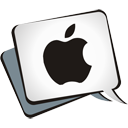It appears a recent security update released by Apple has caused users of certain iMacs and MacBook Pros to lose their Ethernet connectivity. Following installation of the security update and a restart of the system, the Macs can no longer connect to their networks via Ethernet.
The problem appears to be related to version 3.28.1 of the “Incompatible Kernel Extension Configuration Data” which breaks the BCM5701 Ethernet driver. Apple has apparently replaced the offending update and if you are able to connect to Wi-Fi, the system should automatically update to version 3.28.2.
Apple has published a technical bulletin on this issue which is available here. Even if you don’t normally use Ethernet, we suggest checking this information on your Mac so Ethernet is available and working should you suddenly need it. Here are some of the details listed in Apple’s bulletin to help you correct this problem.
First, check your version number:
- While pressing the Option key, select System Information from the Apple menu.
- Expand the Software section and select Installations.
- Click on the Software Name column header to sort the list alphabetically.
- Look for “Incompatible Kernel Extension Configuration Data.”
- If the most recent version installed is 3.28.1, then follow the steps below.
If you can connect to WiFi, follow these steps to update to version 3.28.2:
- Open the Terminal app.
- Type this command to update to the current version of the “Incompatible Kernel Extension Configuration Data” kernel extension:
sudo softwareupdate –background
- Quit Terminal and restart your Mac.
If you can’t connect to WiFi, follow these steps to update to version 3.28.2:
- Follow the instructions to restart your Mac in OS X Recovery. After your Mac restarts, go to step 2.
- Select Disk Utility from the list of OS X Utilities.
- Select your drive from the list of internal drives in the sidebar. The default name is “Macintosh HD.” Your drive might have a different name or location, if you renamed or moved it.
- If the drive name is gray, then your drive might be protected by FileVault. Select File > Unlock from the Disk Utility menu, and enter your FileVault password.
- Select File > Mount in Disk Utility to mount your drive, if it’s not already mounted.
- Quit Disk Utility. If you’d like to be able to copy and paste the command required in Step 8, select Get Help Online from the OS X Utilities list to open Safari and view this article on Apple’s support site at support.apple.com/kb/HT6672. Quit Safari before you go to the next step.
- Launch the Terminal app from Utilities > Terminal.
- Type (or copy and paste) this command as one line in Terminal. In the example below, the drive name is “Macintosh HD,” and there’s a space between Macintosh and HD. If your Mac’s drive name is different, adjust the text:
rm -rf “/Volumes/Macintosh HD/System/Library/Extensions/AppleKextExcludeList.kext”
- Quit the Terminal app.
- Select Restart from the Apple menu.
- After your Mac restarts, your Ethernet connection should work.
- Open the Terminal app and type this command to update to the current version of the “Incompatible Kernel Extension Configuration Data” kernel extension:
sudo softwareupdate –background
- Quit Terminal and restart your Mac.
As a last resort, you can reinstall OS X by restarting your computer in Recovery mode.
If you liked this article, please consider sharing it with your friends and leaving a comment below.
Also, don’t forget to “Like” us on Facebook and “Follow Us” on Twitter.



This was very helpful and easy to follow. Thanks Apple Tech Talk!
Does this apply to machines like a MacBook Air which don’t have an Ethernet port?
Thanks for your note. The Apple Technical Bulletin only mentioned the iMac and MacBook Pro but the issue involved an Ethernet driver that was blacklisted in the original release. While the MacBook Air does not have a dedicated Ethernet port, it does have the ability to connect to Ethernet through the use of a dongle, and therefore uses an Ethernet driver also.
Our suggestion is to follow the instruction above and check the version number of the affected file so there are no surprises later on.